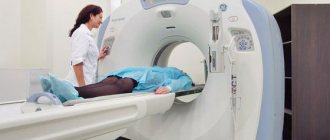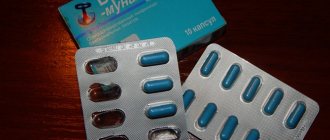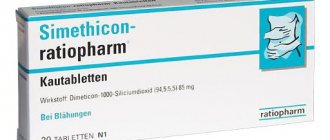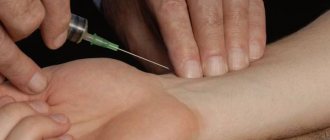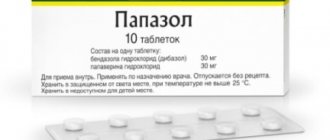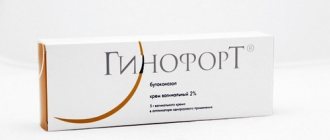FEATURES OF THE PROCEDURE
The irrigoscopy method is based on the ability of intestinal tissue to transmit x-rays through itself. It is impossible to assess the condition of the organ using classical x-rays, so contrast is first administered. Today, the two most common types of contrasting are simple and double. In the first case, a solution of barium sulfate is administered; double contrast involves the use of barium together with the introduction of gas, which is necessary in acute cases of the disease, as well as to increase the information content of the study. This intestinal examination is contraindicated if complete or partial obstruction is suspected.
The contrast agent is administered via enema directly into the intestines, where it coats the walls of the organ and allows you to evaluate the functionality of the muscles and the contour of the walls.
Is this procedure harmful? Do they do it for children?
Fluoroscopy involves the use of ionizing radiation. However, its dose is very small and cannot harm the body. However, women of childbearing age are usually prescribed alternative tests to avoid the occurrence of unwanted mutations.
The procedure is rarely performed on children and is more often used for urgent diagnosis, which is explained by the fact that it is too difficult to prepare them for it.
A small patient is recommended to take a large amount of fluid for two days. The evening before the procedure he is given enemas. Their number directly depends on the degree of complete emptying of the intestines from feces.
Most often, a child is examined for intussusception or obstruction. Bobrov's apparatus includes a children's kit, so the procedure cannot harm the child. The amount of barium is specially calculated by the doctor depending on his age and height.
What does irrigoscopy reveal?
Through an irrigoscopic examination, it is possible to study in detail various areas of the intestine, this allows a specialist to conduct a high-quality diagnosis of the organ. Using the procedure, the diameter of the intestinal lumen, location and outline of a particular area are determined. The distensibility of the intestinal wall is also assessed.
In addition, during irrigoscopic diagnosis, the functioning of the valve apparatus located between the ileum and colon is checked. In a healthy state, it ensures the unidirectional movement of feces into the large intestine, and their reverse movement is excluded. With various dysfunctions, feces can be thrown back into the overlying parts of the intestine.
Irrigoscopy allows you to evaluate the work of different segments, as well as the condition of the mucous membrane of the intestinal wall.
Using this type of diagnostics, oncological formations, polyps, diverticula, etc. can be identified in the intestinal structure.
Features of irrigoscopy in children
Irrigoscopy in children is carried out only in case of immediate diagnosis, since it is quite difficult to prepare a child for the procedure. He needs to drink a lot of water two days before the test, and do enemas immediately before the test. Children are more often prescribed other types of diagnostics.
If it is necessary to perform irrigoscopy, the child is given much less contrast agent. But parents don’t have to worry about radiation exposure, because its level is very low. Another advantage of conducting this study in a child is that after irrigoscopy, bowel straightening is possible. This action is very important if you have constipation.
You can learn about all the features of irrigoscopy from this video clip:
Indications and contraindications
Intestinal irrigoscopy is indicated in the following cases:
- cicatricial adhesive processes that arose after surgery or against the background of protracted inflammatory processes;
- single or multiple pathological protrusions of the intestinal walls (diverticula);
- intestinal fistulas;
- chronic inflammatory processes;
- significant enlargement of the entire large intestine or a separate part of it;
- the length of the sigmoid colon is more than 46 cm;
- frequent abdominal pain of unknown etiology;
- stable stool disorders (constipation or diarrhea);
- monitoring the condition of the intestine after resection;
- detection of blood streaks in stool;
- assessment of the condition of surgical anastomoses between intestinal walls.
This method becomes very relevant if for some reason a colonoscopy cannot be performed or if the results it gives seem questionable. In addition, such a diagnosis is mandatory if cancer is suspected in a patient with poor heredity or in those who are being seen by an oncologist.
Contraindications to irrigoscopy are not numerous, but they do exist: the patient’s general serious condition caused by cardiac or respiratory failure, penetrating damage to the wall of the large intestine, pregnancy, acute inflammatory processes in the intestine. Before prescribing irrigoscopy, the proctologist must weigh all contraindications and come to the conclusion that the likely benefit, in the case of a particular patient, outweighs the possible risk.
Intestinal irrigoscopy: patient reviews
According to reviews, during the procedure there is no pain at all, and it is very easily tolerated. There are practically no negative consequences or poor health after it.
A person usually does not experience the slightest discomfort. Overly impressionable patients are recommended to take sedatives the day before.
In the absence of pathological changes, irrigoscopy usually does not take much time. People who have undergone it note that it is much easier to tolerate psychologically and subjectively than magnetic resonance imaging or colonoscopy.
The average price of irrigoscopy in Moscow ranges from two and a half to four and a half thousand rubles. According to the compulsory medical insurance policy, it can be completed completely free of charge in medical institutions that have the appropriate equipment.
ADVANTAGES OF THE METHOD
The study is prescribed for a large number of diseases of the large intestine, and also as a replacement for a painful and unpleasant colonoscopy. The technique allows you to make a correct diagnosis, since many gastrointestinal diseases have similar symptoms. Thus, it allows you to confirm or refute the presence of tumors, polyps, as well as diverticula, and evaluate their localization and development. For colon cancer, irrigoscopy is necessary to monitor metastases and their dynamics. Plus, irrigoscopy is effective for hemorrhoids. There are a number of other advantages of the method:
- Using irrigoscopy, you can study the relief of the mucous membrane of the epidermis of the colon, identify foci of inflammation and atrophied or healed areas;
- Irrigoscopy has proven itself well for the study of congenital or acquired pathologies of intestinal development;
- The use of contrast allows you to visually assess the functioning of almost all parts of the colon, the strength of spasms and atony.
The big advantage of the procedure is its painlessness, as well as the low level of radiation exposure to the body, lower than that of tomography. And in terms of time and the absence of danger for the patient, irrigoscopy is the most optimal procedure.
Pros and cons of irrigoscopy
The advantages of irrigoscopy are, first of all, the opportunity to assess the performance of the intestines using a gentle examination. This method is highly informative in identifying various neoplasms and allows for examination of the entire intestine, including the cecum, as well as the appendix. The study allows you to identify places of narrowing, assess how much peristalsis is reduced and what the strength of spasms is.
Among the disadvantages of irrigoscopy, it should be noted that radiation exposure (albeit small) is still present. It is not possible to collect samples for further research. Simultaneous targeted therapy cannot be performed. There are no complications if the study is carried out correctly. However, if an excessive amount of contrast agent is administered, the patient may experience mild pain in the form of tingling. Allergic reactions are also possible.
How to prepare for the examination?
The patient must prepare in advance for irrigoscopic diagnosis. The intestinal wall should be cleaned as much as possible, this will allow for a thorough examination.
24-48 hours before the procedure, the patient should adhere to a certain diet. You need to drink at least 2 liters of water per day. You should also follow your doctor's dietary recommendations during this time.
Immediately before the day of diagnosis, cleansing is carried out using laxatives (salt agents, castor oil). In addition, it is necessary to give 2-3 enemas with clean water. Enemas are not always done; in some cases they can be replaced with osmotic laxatives and large amounts of water.
You should first inform your doctor about what medications you are using. Many patients regularly take warfarin, indomethacin, ibuprofen, diclofenac, insulin, aspirin and other drugs that affect blood clotting. You need to inform your doctor about all appointments before you start preparing. The day before the irrigoscopy, the drug is suspended.
Preparation for the procedure
Like most other examinations of the digestive tract, intestinal irrigoscopy is done after a special preparatory period. For the examination to be informative, the intestine must be free of feces and filled as much as possible with a contrast agent.
Slag-free diet
The diet implies that the patient will focus on foods that do not cause flatulence, increased peristalsis and do not provoke the formation of large amounts of feces. It is recommended to exclude from the diet:
- flour products;
- milk that has not been subjected to any type of processing;
- fatty fermented milk products;
- peas, beans, lentils, chickpeas;
- meat and fish of fatty varieties;
- hot spices;
- fiber-rich foods;
- drinks with gases, including kvass;
- drinks and foods high in caffeine.
To preserve their beneficial properties, it is important not to subject vegetables and cereals to prolonged heat treatment. The cereal will turn out great if you soak it first, boil it for no more than 10 minutes and let it sit in a warm place. Steamed or boiled dishes from lean meat and fish are recommended to be eaten with vegetable salads.
The first day of a slag-free diet may consist of the following menu:
- First meal: boiled buckwheat, a dried piece of white bread with a slice of cheese, green tea.
- Lunch: 200 ml low-fat kefir.
- Lunch meal: diet broth, boiled fish or meat with a light salad, sour hibiscus tea.
- Afternoon snack: boiled egg, a piece of dried bread, chamomile tea.
- Evening meal: low-fat fermented baked milk served with biscuits.
The diet on the second day of a slag-free diet should be as close as possible to liquid nutrition: vegetable soup, fermented milk products with a low percentage of fat, tea, dried fruit compote. For sweets, you can afford 1 tablespoon of honey. The daily drinking regime should include at least 2–2.5 liters of water.
The day before the scheduled examination, you can only eat breakfast and lunch, and for dinner you can drink low-fat clear broth or a glass of juice. At first glance, such a diet is very strict, but anyone can endure it for 2-4 days. There is no other way to properly prepare the intestines. For patients with normal stools, it is enough to stick to this diet for 2 days. And those who are concerned about constipation will have to adhere to a slag-free diet for 4 days. The intestines are considered cleansed if the patient sees clean rinsing water during bowel movements
Purgation
The patient can independently choose the method of bowel cleansing that suits him. If the patient prefers a cleansing enema before irrigoscopy, he will need a combined rubber heating pad (Esmarch mug). Then he should proceed as follows.
The mug is filled with water, air is released and the tap is closed or the tube is closed with a surgical clamp. The enema is suspended at a height of 1.5 meters above the patient's body. The patient is placed on his left side and asked to pull his legs towards his stomach. It is problematic for the patient himself to perform such manipulations, so an “assistant” is needed.
If the pressure is strong and the patient is in pain, then the heating pad should be lowered. If the water supply is weak, the heating pad should be raised higher. On the eve of the examination, in the afternoon, you will need to do a cleansing enema twice. The patient must first take castor oil or magnesium 3-4 hours before the forced enema. After natural bowel movements, the enema is done twice, at 20:00 and at 21:00. In the morning on the day of irrigoscopy, the procedure is repeated 1 more time.
However, most patients prefer to prepare for the upcoming procedure with the help of lavage (washing) medications. Of the available pharmaceutical drugs, many use Fortrans. It allows you to soften the intestinal contents and loosen fecal stones.
The drug is well tolerated and does not cause cramps or excessive gas formation. It can be used by breastfeeding women. However, the drug should not be taken by patients with serious pathologies of the cardiovascular system, severe dehydration, with partial or complete disruption of the movement of contents through the intestines and with serious lesions of the mucous membrane. When an irrigoscopy is prescribed, you will need 3-4 sachets of the product.
If intestinal irrigoscopy is performed in the morning, proceed as follows:
- Reception of Fortrans begins the day before 18:00.
- The contents of the sachets are dissolved and drunk within 60 minutes.
- As a rule, it is recommended to drink a glass every quarter of an hour.
- To get rid of the urge to vomit, after each serving of the product you can chew a piece of lemon.
- If the examination is scheduled for the second half of the day, then part of Fortrans is taken the day before after 18:00, and the rest of the portion is drunk in the morning on the day of the examination.
If a patient wants to perform lavage, he should consult a doctor about the chosen drug and the correct action.


